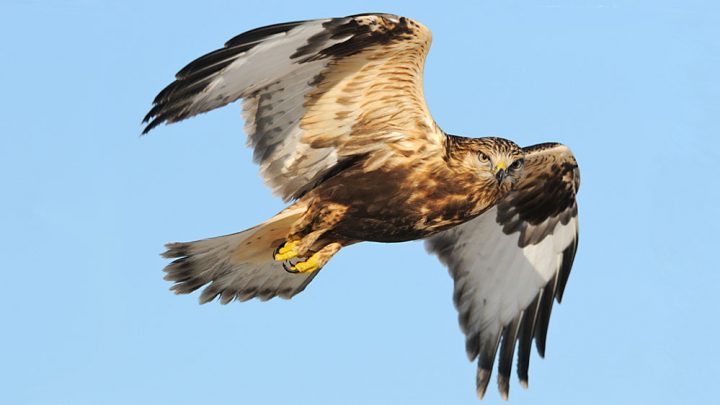Where can I go to watch hawk migration?

Few spectacles are as exciting as witnessing a big hawk migration—and each fall brings another chance. And you don’t have to visit one of the famous migration spots such as Hawk Mountain in Pennsylvania and Hawk Hill in San Francisco—it’s possible to enjoy this phenomenon from many spots closer to home. You just need to find a good view and pay attention to weather patterns.
Being at the right place on the right day during hawk migration can be a transcendent experience in which hundreds, perhaps thousands of raptors pass by. Bear in mind that migrating hawks follow well-defined routes as they move south, generally moving from northwest to southeast (east of the Rockies), so you’ll want a clear view to the north or northwest. Most hawks are soaring birds. They depend on thermals and updrafts to help them travel. and this means they often follow ridgelines. They also tend to follow shorelines so that they avoid crossing large bodies of water where updrafts and thermals are scarce.
In the fall, the best time to observe hawk migration is often the second day after a cold front has passed. This is especially true if there are steady northwest or west winds producing updrafts as the strong air currents are forced over the north-south oriented ridges.
Thanks to our BirdCast project it’s easier than ever to be in the right place at the right time. The project is a collaboration between ornithologists and computer scientists. It produces free, weekly forecasts about which birds are likely to be migrating across which regions of North America. Additionally, the Hawk Migration Association of North America has a map of hawkwatch sites for each state.
So find a hilltop, open area, or shoreline with a clear view to the north or northwest. Watch the weather or determine when a cold front will be passing through. Wait one day, and if the forecast for the following day is sunny and breezy, head to your spot and give it a shot!

All About Birds
is a free resource
Available for everyone,
funded by donors like you
American Kestrel by Blair Dudeck / Macaulay Library
